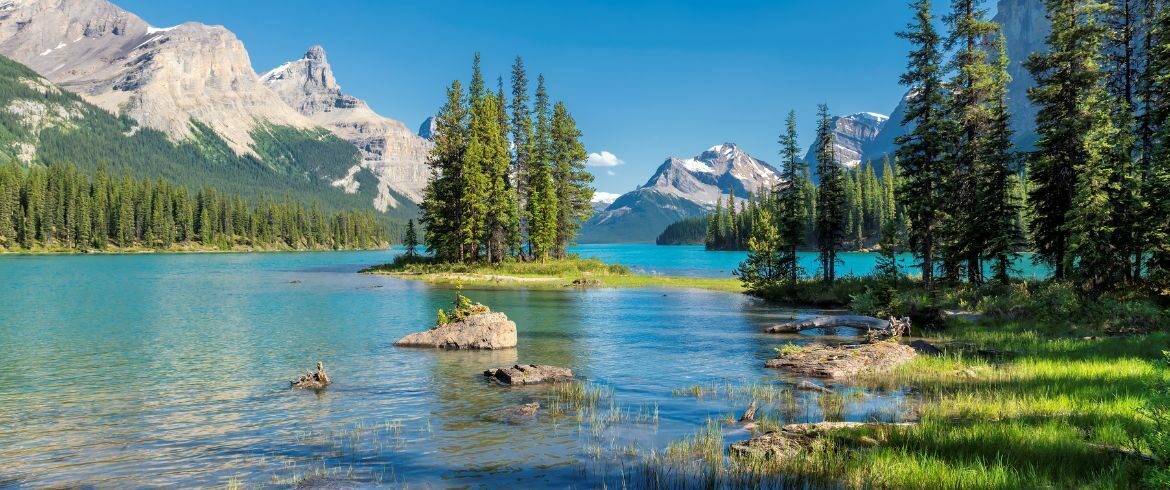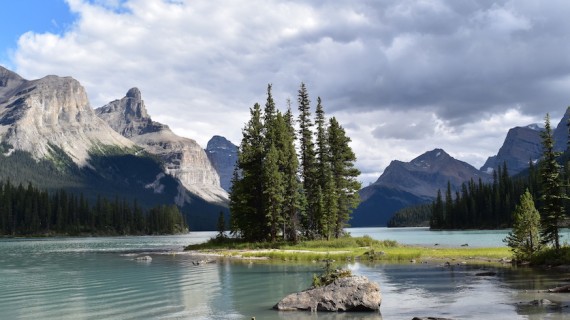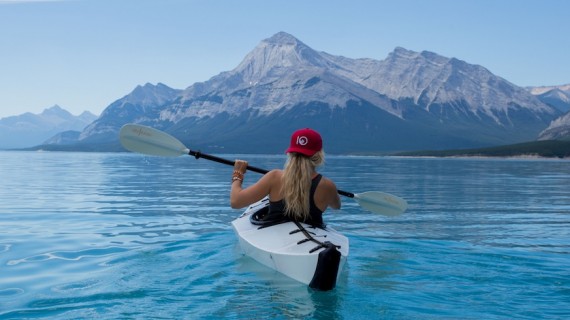From the Pacific coast to the Atlantic Ocean, a route through nature in Canada. Canada offers a wide range of proposals for those who wish to get to know its lands in a more sustainable way and get in touch with its natural beauties and biodiversity.
In fact, it has 37 national parks and 10 park reserves, protecting approximately 336,343 square kilometres of its land. If you want nature, this North American giant has to be on your agenda.
Here’s a look at some of the most spectacular destinations if you want to connect with nature in Canada.
Banff National Park
Located in the Rocky Mountains of Alberta, Banff National Park is Canada’s oldest national park. It was founded in 1885 and has been listed as a UNESCO World Heritage Site since 1984.

It is known for its breathtaking natural beauty, with majestic mountains, crystal clear lakes, forests and a variety of wildlife. It covers more than 6,600 square kilometres and boasts major mountain peaks such as Mount Temple and Mount Victoria.
Popular activities in Banff National Park include hiking, wildlife viewing, camping, skiing and snowboarding. There are more than 1,600 kilometres of trails of varying levels of difficulty to explore.
The park’s lakes are also a major attraction for visitors, such as the famous Lake Louise and Lake Moraine, which are known for their crystal clear waters and breathtaking mountain scenery.
Other attractions include the Banff Gondola cable car, which offers panoramic views of the mountains, and the village of Banff, with its shops, restaurants and art galleries.
You can also visit the park’s Information Centre for more information on sites and activities.
Gros Morne National Park
Gros Morne National Park is located on the west coast of the island of Newfoundland in the province of Newfoundland and Labrador. It was designated a UNESCO World Heritage Site in 1987 because of its unique geological landscape and rock formations.

The park offers a wide variety of activities for visitors. Some of the main rides and attractions include:
Hiking: There are more than 100 kilometres of trails winding through mountains, forests and lakes. Visitors can choose from a wide range of routes, from short, easy walks to multi-day hikes.
Wildlife viewing: This territory is home to a wide variety of animals, including moose, caribou, black bears, red foxes, eagles and hawks.
Kayaking and canoeing: this is one of the most recommended activities. In this park it is common to explore the coastline and lakes by kayak or canoe. The park’s coastline is breathtaking and offers excellent views of the mountains and wildlife.
Whale-watching: another exciting proposition in this park, especially in Bonne Bay. Humpback, minke and fin whales are common in the area.
Those wishing to try a more environmentally friendly form of accommodation have the option of camping in one of the three camping areas. There are also museums and visitor centres offering information on the history and geology of the region.
Bay of Fundy biosphere reserve
The Bay of Fundy Biosphere Reserve is a protected area located on the east coast of Canada, in the province of New Brunswick and northern Nova Scotia.

The Bay of Fundy is known for having the largest tidal range in the world, which creates a unique and diverse ecosystem in the region.
This reserve covers a large area of land, including lowlands, coasts, cliffs, islands and rivers. It is designed to protect the region’s biodiversity and to promote the economic and social sustainability of local communities.
Activities in the Bay of Fundy Biosphere Reserve include whale watching, hiking at various levels.
One of the most popular activities in this reserve is bird watching. More than 300 species of birds live here, including some of the rarest in the world.
Prince Edward Island National Park
Prince Edward Island National Park is located in the Canadian province of Prince Edward Island. It was established in 1937 and is one of the smallest (but no less spectacular) in Canada, covering an area of 22.5 square kilometres.

Its area stretches along the north coast of the island and has a variety of natural habitats, including sandy beaches, dunes, cliffs, forests, grasslands and wetlands. It is located in a transitional region between the boreal forests of the north and the deciduous forests of the south, giving it a rich biodiversity.
The park is a popular destination for visitors looking to enjoy outdoor activities such as hiking, camping, swimming, surfing, bird watching and wildlife viewing.
It is especially pleasant for cycling, with some 20 kilometres of paved multi-purpose cycling trails.
There are several hiking trails, including a route along the Gulf of St. Lawrence cliff route, which offers breathtaking views.
Jasper National Park
We finish again in the province of Alberta, with Jasper National Park, the largest national park in the Canadian Rockies, with an area of more than 10,800 square kilometres. It was established in 1907.
The park has a wide variety of landscapes and ecosystems, including mountains, glaciers, lakes, rivers, forests and alpine meadows.

It is also home to a great diversity of wildlife, including bears, moose, caribou, coyotes, wolves, cougars and many other animals.
Some of the activities you can do in Jasper National Park include:
Hiking: There are a number of trails that run through the park, ranging from short walks to more challenging routes. Some of the most interesting routes are on Mount Edith Cavell.
Excursions: such as walking on the Athabasca Glacier, one of the largest and most accessible of the Rocky Mountain glaciers, can be reached via the Icefields Road, where visitors can walk on the ice on the glacier.
Canoeing and kayaking: Lake Maligne, for example, is one of the most photographed lakes in the world and is surrounded by mountains and forests. Canoeing, boating and hiking are available in the surrounding area.
In addition, as in other parks in Canada’s vast territory, visitors can see different species of animals in their natural habitat, go cycling, skiing, snowboarding or camping.

Jasper’s dark skies also make it a perfect place to observe the stars and the Milky Way.
Cover image: Jasper National Park, via Canva Pro




